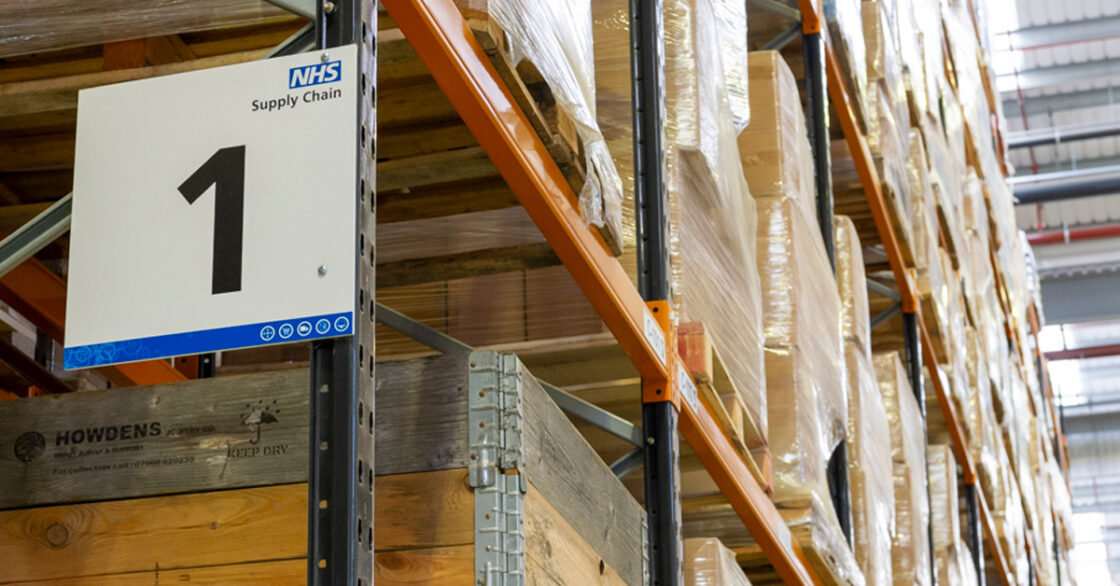Packaging Outputs Deep Dive – A Blog from Jade Gaffney Sustainability Advisor
Hello, my name is Jade Gaffney, I am a Sustainability Advisor for NHS Supply Chain reporting directly to our Head of Sustainability Heidi Barnard. I previously worked in one of our category teams as a Sustainability Coordinator.
Sustainability is more than just a job to me it’s something that I have always been passionate about in day-to-day life.
Packaging survey results – product deep dive
Following on from our Head of Sustainability Heidi Barnard’s blog a few months ago we’ve been working on our packaging project, visiting NHS trusts to listen to their challenges with packaging.
The survey we conducted with NHS trusts earlier this year revealed several recurring concerns about our products, prompting us to focus on these areas during our customer visits:
- IV / saline sets: Boxes are overpackaged, difficult to break down, and have problematic instruction leaflets.
- Syringes and needles: Excessive packaging, including bags within bags and white boxes, created confusion about material recyclability.
- Oral supplements: There is confusion over the recyclability of oral supplement packaging, and over-ordering is a common issue.
- Gloves: Misuse and sizing issues with gloves contribute to waste generation.
See our Useful Links section to read Heidi Barnard’s blog on the full results of the packaging survey.

Overarching themes across product lines
Beyond product-specific concerns, several common themes emerged:
- Excess cardboard at the trust level: A significant amount of cardboard waste was generated at the trust level.
- Overpackaging: Unnecessary layers of packaging, such as bags within bags within boxes, added to waste generation.
- Coloured or white boxes: The use of coloured or white boxes
- Recyclability: Overall, there was a need for clearer labelling and guidance on material recyclability.
- One-material packaging: Preference for packaging made from a single material to simplify recycling processes.
- Tonnage and materials split confusion: Ambiguity existed regarding tonnage reporting and the separation of materials for recycling.
- Instruction leaflets: The environmental impact of instruction leaflets needs to be considered.

Customer visits
To gain a comprehensive understanding of packaging challenges, I engaged in extensive consultations with six trusts across the country including Royal Oldham Hospital, Salford Royal Hospital, Airedale General Hospital, Sandwell and West Birmingham Hospitals NHS Trust and Royal Devon University Healthcare NHS Foundation Trust, conducting four, floor walks and two remote meetings. I also visited two of our warehouses and reached out to multiple suppliers to gather their perspectives on packing challenges.
A common theme that emerged throughout my visits and conversations with suppliers was that there is a tendency to adhere to existing practices simply because they have always been done that way. This mindset, while understandable, can hinder innovative solutions and prevent the adoption of more efficient and sustainable approaches.
Lean Six Sigma: a guiding principle
To address this challenge, I drew upon the principles of Lean Six Sigma, a methodology that emphasises waste reduction and efficiency enhancement. This approach provides a structured framework for identifying and eliminating unnecessary processes, streamlining operations, and minimising waste generation.
Collaboration with suppliers
We’re keen to join forces with our suppliers to tackle these issues and improve the sustainability of our supply chain.
A supplier of oral supplements was already actively engaging with Sandwell and West Birmingham Hospitals NHS Trust to address packaging challenges. We joined their meeting, sharing insights and collaborating on potential solutions. The supplier had already taken steps to reduce packaging waste by eliminating cardboard trays. They are also partnering with Sandwell Hospital on a recycling pilot, providing clear labelling and signage to guide good waste disposal practices.
This is a great example of what suppliers can do to support the NHS net zero ambitions.
Conclusion
Reducing packaging waste is a complex challenge that requires collaboration and innovative ideas. By working together with healthcare providers, suppliers, and other stakeholders, we can achieve significant environmental benefits and contribute to a more sustainable healthcare system.
Recommendations for improvement
- Apply the waste hierarchy: We should prioritise waste reduction, followed by reuse and recycling, with disposal as a last resort.
- Choose reusable or recyclable materials: We should favour packaging made from reusable or recyclable materials whenever possible.
- Collaborate with suppliers: We should continue to engage with suppliers to implement packaging reduction initiatives.
Next steps
This project is a long-term endeavour that requires collaboration and the sharing of innovative ideas. I will be working closely with our trusts, suppliers, and supply chain, and to devise a plan of action based on the recommendations mentioned above. The goal is to have a solid plan in place by spring 2024.
Links section
-
Packaging Blog - Results of Survey
Read this blog about the results of a recent survey by Heidi Barnard, Head of Sustainability.
-
Sustainability
Supporting the NHS to become the world’s first carbon net zero national health system.
